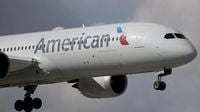Travelers on an American Airlines flight bound for Naples, Italy, faced an unexpected detour this week when their Boeing 787-9 Dreamliner was deemed too large to land at Naples International Airport, forcing a diversion to Rome and a lengthy bus ride to their final destination. This incident, which unfolded on Tuesday morning, June 3, 2025, highlights the growing challenges airlines and airports face as aircraft sizes increase and infrastructure struggles to keep pace.
Flight 780 departed Philadelphia at 7:42 p.m. local time on Monday, June 2, 2025, with passengers expecting a smooth arrival at Naples around 9:10 a.m. the next day. However, just 70 miles from Naples, the flight made an abrupt turn northward, landing instead at Leonardo da Vinci International Airport (FCO) in Rome at 9:45 a.m. This unexpected reroute left many passengers puzzled and frustrated as they were then bused over 140 miles—typically a two-hour journey—back to Naples.
The root of the disruption lies in the aircraft itself. American Airlines usually operates a Boeing 787-8 on this route, a model comfortably compatible with Naples Airport's infrastructure. On this occasion, however, the airline deployed a Boeing 787-9, a larger variant that is approximately 20 feet longer and can accommodate 290 passengers compared to the 787-8's 242. While the wingspans of both models are similar, the increased length of the 787-9 brings with it stricter operational requirements.
One critical factor is the Rescue and Fire Fighting Services (RFFS) category that an airport must meet to safely handle a particular aircraft. According to Boeing and the International Civil Aviation Organization, the 787-8 can safely land at airports with a Category 8 RFFS, which Naples International Airport meets. However, the 787-9 requires a Category 9 RFFS classification, a standard Naples does not fulfill. This mismatch rendered the 787-9 incompatible with the airport's safety protocols, prompting the diversion.
An American Airlines spokesperson attributed the change to "operational limitations," a term that often encompasses equipment availability and logistical considerations. The airline apologized for the disruption, stating, "Customers traveled from FCO to NAP by bus, and we apologize to them for this disruption to their journey." Yet, questions remain about why the larger aircraft was assigned to a route where the primary destination lacks the necessary infrastructure to support it.
This incident is more than a mere inconvenience for passengers; it exposes a broader issue in global aviation. As airlines modernize their fleets with larger, more efficient aircraft to meet growing demand and reduce environmental impact, many regional airports—especially in Europe—have not upgraded their facilities accordingly. Naples International Airport, a vital gateway to southern Italy's tourist hotspots like the Amalfi Coast, Capri, and Pompeii, remains limited to Category 8 RFFS, restricting the types of aircraft it can safely accommodate.
The consequences ripple through the tourism industry. Travelers expecting a seamless journey to their southern Italian destinations instead faced added fatigue, confusion, and delays. Hotel check-ins, tour schedules, and connecting flights were all disrupted. For a region heavily reliant on tourism, such unpredictability threatens visitor satisfaction and, ultimately, economic recovery following the COVID-19 downturn.
Moreover, this is not an isolated case. Earlier this week, a Ryanair flight was diverted due to severe turbulence, forcing passengers from Memmingen, Germany, to endure a 4.5-hour bus trip to Milan. These instances underscore a worrying trend: operational pressures and infrastructure limitations are increasingly shifting the burden onto travelers, who become the buffer for aviation's growing pains.
Industry experts emphasize the need for better coordination between airlines and airport authorities. Aircraft substitutions must consider not only fleet logistics but also the capabilities of destination airports. Upgrading airport emergency services and ground infrastructure to meet the demands of larger aircraft like the 787-9 is essential if regional airports want to maintain and grow their international connectivity.
Until such investments are made, travelers are advised to prepare for contingencies. What was supposed to be a transatlantic flight ending in the picturesque city of Naples instead became a journey involving an unexpected highway detour. As one might say, even a Dreamliner can sometimes end with a bus ride.




